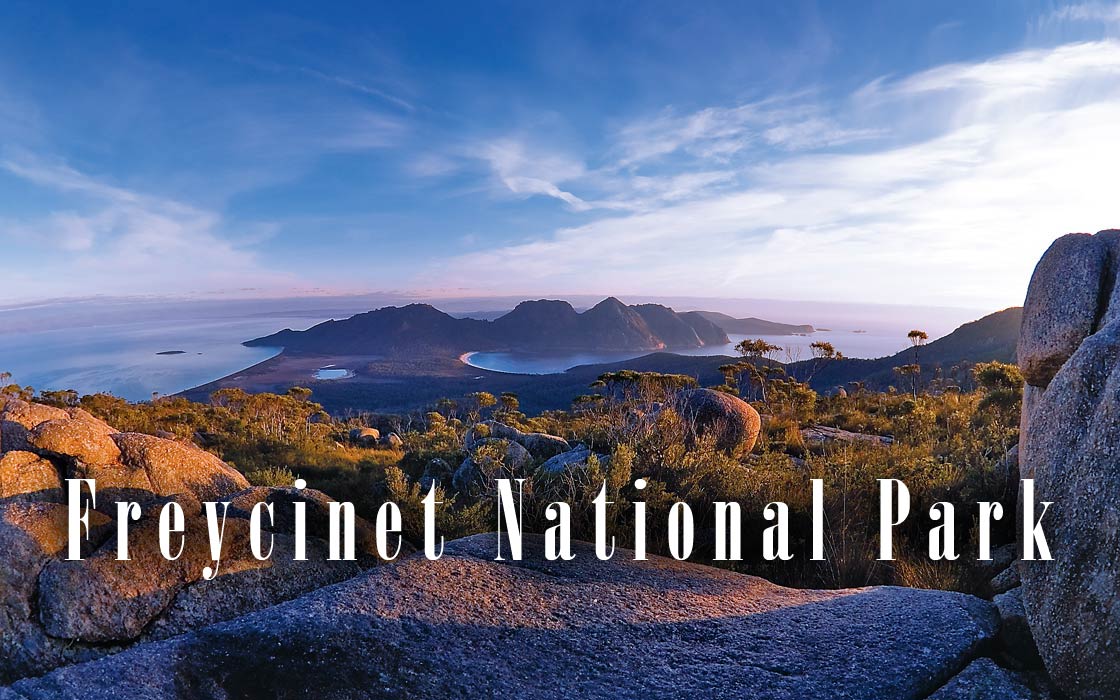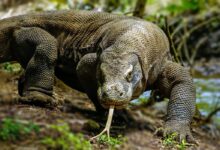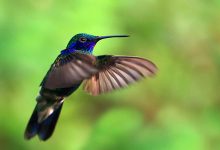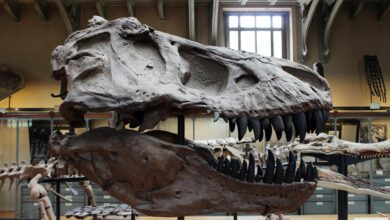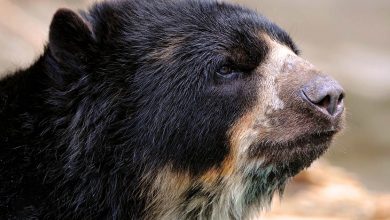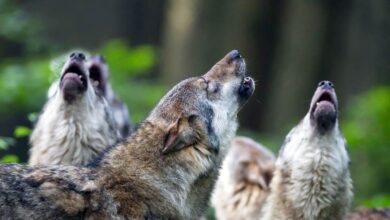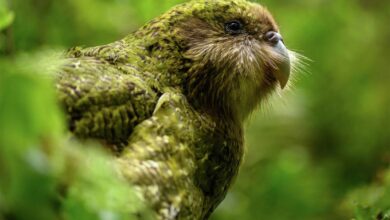Freycinet National Park: Tasmania’s Crown Jewel
Freycinet National Park, located on the East Coast of Tasmania, Australia, is a breathtakingly beautiful wilderness that takes your breath away with its scenic landscapes and diverse wildlife. With its turquoise waters, pristine white beaches, rugged cliffs and lush green forests, this park offers a unique combination of natural beauty and adventure for visitors. Whether you’re seeking a relaxing beach day, a scenic hike, or an unforgettable camping experience, Freycinet National Park is the perfect destination to immerse yourself in nature and rejuvenate your soul.
Location
Freycinet National Park is located on the East Coast of Tasmania, Australia. It covers an area of over 165 square kilometers (64 square miles) and is situated about two hours’ drive from the city of Hobart. The park is known for its stunning landscapes, including the famous Wineglass Bay, as well as its diverse wildlife, including wallabies, echidnas, and a variety of bird species. It is a popular tourist destination for those looking to explore Tasmania’s rugged beauty and unique natural environment.
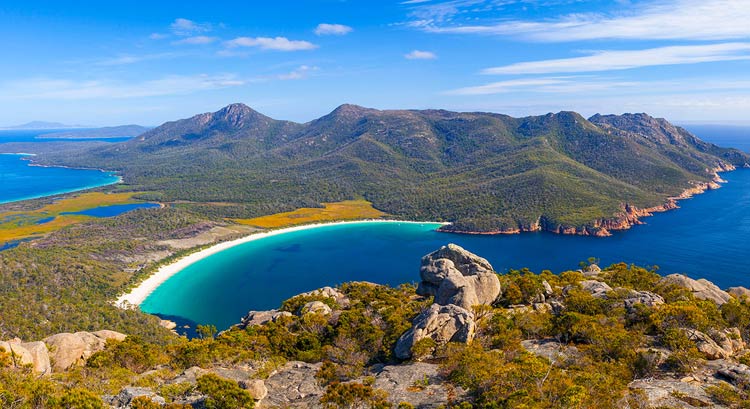
Basic Facts About Freycinet National Park
Freycinet National Park is a protected area located on the East Coast of Tasmania, Australia. It was established in 1916 and covers an area of 165 square kilometers (64 square miles). The park is known for its stunning landscapes, including the famous Wineglass Bay, as well as its diverse wildlife, including wallabies, echidnas, and a variety of bird species. It is a popular tourist destination for those looking to explore Tasmania’s rugged beauty and unique natural environment.
Some additional basic facts about Freycinet National Park include:
- Elevation: Ranges from sea level to 319 meters (1,047 feet) at the summit of Mount Freycinet
- Climate: Mild temperate with high rainfall in the winter months
- Main attractions: Wineglass Bay, Mount Freycinet, Cape Tourville Lighthouse, Sleepy Bay, and the Hazards Mountains
- Popular activities: Hiking, camping, fishing, swimming, and wildlife viewing.
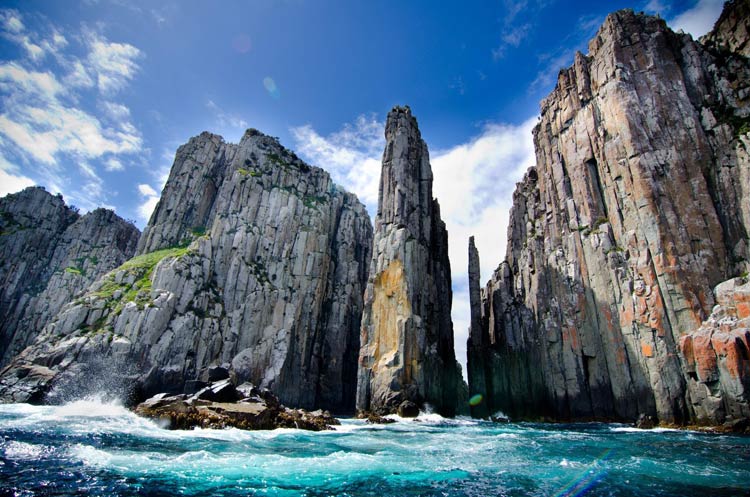
History and name of the Park
Freycinet National Park is named after French navigator Louis de Freycinet who explored the area in the early 19th century. The park was established in 1916 and is one of Tasmania’s oldest national parks. The indigenous people of Tasmania, the Palawa, have lived in the area for thousands of years and have a rich cultural history and deep connection to the land.
In the early 20th century, the park was used primarily for logging, fishing, and hunting. However, as appreciation for its natural beauty grew, it became a popular tourist destination, leading to the creation of a network of walking tracks and camping facilities. Today, Freycinet National Park is recognized as one of Australia’s most iconic and popular national parks, attracting hundreds of thousands of visitors each year.
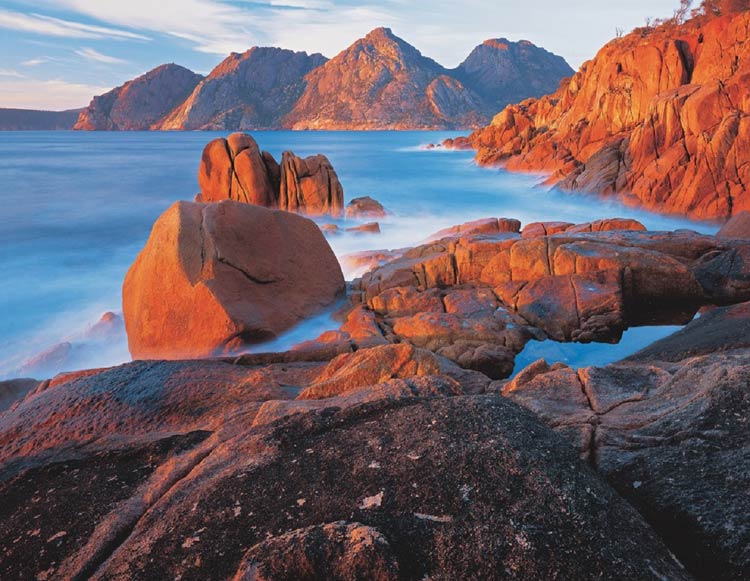
Geography
Freycinet National Park is located on the East Coast of Tasmania, Australia and covers an area of 165 square kilometers (64 square miles). The park is situated about two hours’ drive from the city of Hobart and is known for its stunning landscapes and diverse wildlife.
The park features a range of topographical features, including:
- Beaches
The park is home to some of Tasmania’s most pristine white sand beaches, including the famous Wineglass Bay. - Cliffs
The park features towering cliffs and rocky outcrops, such as the Hazards Mountains, that offer panoramic views of the surrounding landscape. - Forests
The park is covered in lush green forests, including eucalyptus and acacia trees, that provide habitat for a variety of wildlife species. - Mountains
Mount Freycinet, the park’s highest peak, rises 319 meters (1,047 feet) above sea level and provides visitors with stunning views of the surrounding landscape.
The park is also home to a number of important waterways, including Coles Bay and Oyster Bay, which provide important habitats for marine species and support a vibrant fishing industry.

Features of the park
Freycinet National Park is renowned for its stunning landscapes and diverse wildlife, making it a popular destination for visitors seeking to immerse themselves in nature. Some of the key features and attractions of the park include:
- Wineglass Bay
This world-famous beach is known for its crystal-clear turquoise waters and pristine white sand. Visitors can hike to the top of the nearby mountains for panoramic views of the bay or relax on the beach and enjoy a picnic. - Mount Freycinet
The park’s highest peak provides visitors with stunning views of the surrounding landscape, including the Hazards Mountains, Coles Bay, and Oyster Bay. - Cape Tourville Lighthouse
This historic lighthouse, located at the end of a scenic headland walk, provides visitors with panoramic views of the park and the surrounding coastline. - Sleepy Bay
This secluded beach is a popular destination for swimming and snorkelling, as well as for exploring the nearby rock formations and wildlife. - Hazards Mountains
This range of rugged peaks and rocky outcrops provides visitors with stunning views of the surrounding landscape, including Wineglass Bay and the Tasman Sea.
In addition to these attractions, Freycinet National Park also offers a range of activities for visitors, including hiking, camping, fishing, swimming, and wildlife viewing. With its unique combination of natural beauty and adventure, Freycinet National Park is the perfect destination for those seeking a rejuvenating and unforgettable experience in nature.
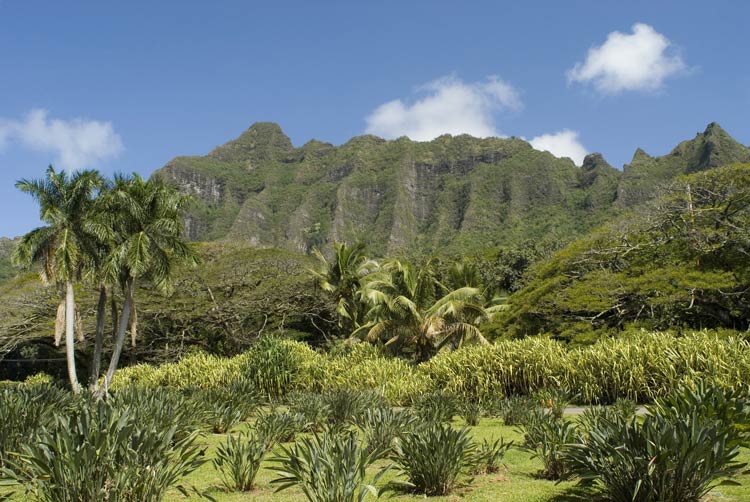
Geology
The geology of Freycinet National Park is dominated by granite formations, which form the rugged and scenic landscapes that the park is known for. The granite was formed over 400 million years ago and has since been exposed to millions of years of erosion and weathering.
Some of the key geological features of the park include:
- Granite formations
The rugged peaks and rocky outcrops of the Hazards Mountains and Mount Freycinet are formed from granite, providing visitors with spectacular views of the surrounding landscape. - Wineglass Bay
The famous Wineglass Bay is surrounded by towering cliffs and is a classic example of a U-shaped bay, created by glacial erosion. - Headlands
The park’s towering headlands, including Cape Tourville, are also formed from granite and provide visitors with panoramic views of the surrounding coastline and sea. - Beaches
The park’s pristine white sand beaches, including Wineglass Bay, are formed from the erosion and weathering of the surrounding granite formations.
Overall, the geology of Freycinet National Park plays a key role in shaping its stunning landscapes and natural beauty, making it a unique and fascinating destination for geology enthusiasts and nature lovers alike.

Climate
Freycinet National Park has a temperate maritime climate, characterized by mild temperatures and high levels of rainfall. The park is located in a coastal area that is sheltered from the prevailing westerly winds, which helps to create a mild and stable climate.
The average temperature in the park ranges from around 10°C (50°F) in winter to around 20°C (68°F) in summer. The summer months (December to February) are generally the warmest and driest, while the winter months (June to August) are cooler and wetter, with frequent rainfall and sometimes strong winds.
Visitors to the park should be prepared for changing weather conditions, as even in summer, it can be cool and overcast at times, especially on the higher slopes and along the exposed coastline. Despite this, the park’s mild and temperate climate provides ideal conditions for outdoor activities and wildlife viewing, making it a popular destination for visitors year-round.
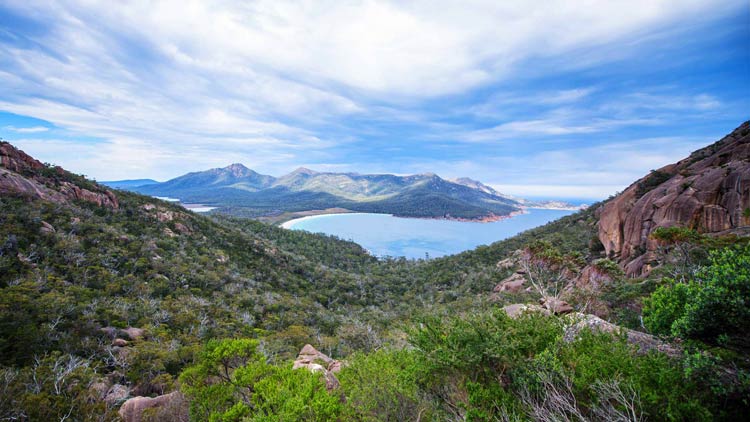
Flora in Freycinet National Park
Freycinet National Park is home to a diverse range of flora, including a mix of coastal, forest, and alpine species. Some of the key plants found in the park include:
- Eucalyptus trees (Eucalyptus globulus, Eucalyptus viminalis)
The park is dominated by tall, straight-trunked eucalyptus trees, which provide habitat for a range of wildlife, including birds and marsupials. - Coastal heathlands (Ozothamnus diosmifolius, Leptospermum scoparium)
The park’s exposed coastal areas are covered in dense thickets of low-growing shrubs and heaths, including heath myrtle and tea tree. - Native ferns (Hymenophyllum cunninghamii, Asplenium australasicum)
The park’s damp and shady areas are home to a range of native ferns, including the delicate Tasmanian lace fern and the tall, arching maidenhair fern. - Wildflowers (Acacia dealbata, Pultenaea daphnoides)
The park’s coastal heathlands and forests come alive with color in spring and early summer, as a range of wildflowers, including golden wattle and the fragrant bush pea, bloom.
The rich and diverse flora of Freycinet National Park plays a key role in shaping its stunning landscapes and providing habitat for a range of wildlife, making it a fascinating destination for botanists and nature lovers alike.
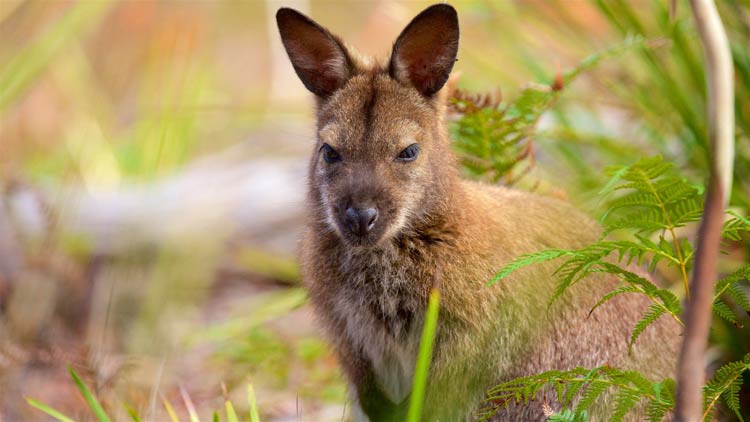
Fauna in Freycinet National Park
Freycinet National Park is home to a diverse range of fauna, including a mix of native and introduced species. Some of the key animals found in the park include:
- Marsupials
- Tasmanian devil (Sarcophilus harrisii)
- Eastern quoll (Dasyurus viverrinus)
- Swamp wallaby (Wallabia bicolor)
- Birds
- Australasian gannet (Morus serrator)
- White-bellied sea eagle (Haliaeetus leucogaster)
- Forty-spotted pardalote (Pardalotus quadragintus)
- The park is an important site for birdwatching, with over 100 species of birds recorded in the area, including the majestic Australasian gannet, the white-bellied sea eagle, and the rare and elusive Forty-spotted pardalote.
- Marine mammals
- Australian fur seal (Arctocephalus pusillus doriferus)
- Humpback whale (Megaptera novaeangliae)
- The park’s coastal waters are home to a range of marine mammals, including the Australian fur seal and the majestic humpback whale, which can often be seen from the park’s beaches and headlands during the annual migration.
- Reptiles
- Eastern three-lined skink (Bassiana duperreyi)
- Red-bellied black snake (Pseudechis porphyriacus)
- The park is home to a range of reptiles, including the Eastern three-lined skink and the venomous red-bellied black snake.
The rich and diverse fauna of Freycinet National Park plays a key role in shaping its ecosystems and providing visitors with opportunities to observe and learn about Australia’s unique and fascinating wildlife.
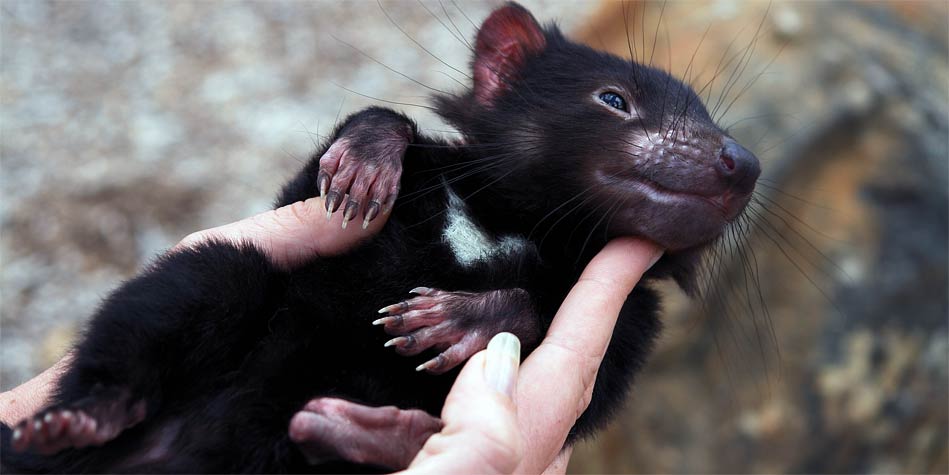
Tourism and tourist main attractions in the park
Freycinet National Park is one of Tasmania’s most popular tourist destinations, attracting visitors from all over the world to its stunning coastal landscapes, crystal-clear waters, and diverse range of flora and fauna. Some of the main tourist attractions in the park include:
- Wineglass Bay
Wineglass Bay is a breathtaking curved beach with crystal-clear waters and white sand, surrounded by towering pink granite cliffs. A popular hike to the Wineglass Bay lookout offers panoramic views of the bay and is a must-do for many visitors to the park. - Cape Tourville Lighthouse
The Cape Tourville Lighthouse, perched on a headland overlooking Great Oyster Bay, offers stunning views of the coast and the park’s pristine waters. Visitors can take a guided tour of the lighthouse and learn about its history. - Mount Graham
Mount Graham, the tallest peak in the park, offers a challenging but rewarding hike for experienced trekkers, with breathtaking views of the coast and the surrounding landscape. - Friendly Beaches
Friendly Beaches is a long, unspoiled stretch of sand that is popular for swimming, sunbathing, and fishing. Visitors can hike from the car park to the beach along the beach-front trail, or enjoy a picnic or camping overnight in the nearby campground. - Hazard Beach
Hazard Beach is a small, sheltered beach that is popular for swimming, sunbathing, and fishing. Visitors can hike to the beach along the beach-front trail, or take a boat tour from the nearby town of Coles Bay.
Freycinet National Park offers a wide range of tourist attractions, from breathtaking natural landscapes and crystal-clear waters to rich and diverse flora and fauna, making it a must-visit destination for tourists in Tasmania.
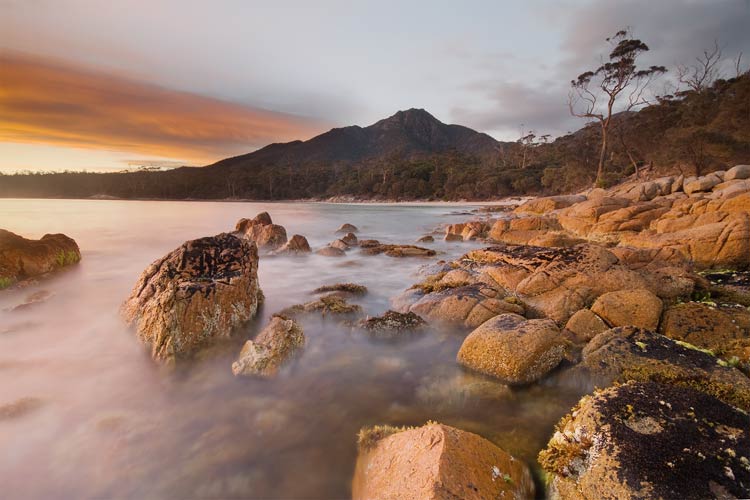
Camping and Accommodation
Freycinet National Park offers a range of camping and accommodation options to visitors. For those looking to experience the park’s rugged wilderness, there are several designated camping grounds within the park, each offering a unique wilderness experience.
Camping grounds in Freycinet National Park include:
- Friendly Beaches Campground
This camping ground is located near the park’s stunning Friendly Beaches and offers a peaceful and serene wilderness experience. - Wineglass Bay Campground
This camping ground is located near the park’s popular Wineglass Bay and provides a convenient base for exploring the park’s many attractions. - Hazards Beach Campground
This camping ground is located near the park’s picturesque Hazards Beach and offers a quiet and secluded camping experience.
In addition to camping grounds, Freycinet National Park also offers a range of accommodation options for visitors who are looking for a more comfortable experience. These options include:
- Freycinet Lodge
This luxurious eco-lodge is located within the park and offers stunning views over Freycinet’s famous pink granite mountains. - Private cottages and cabins
There are several private cottages and cabins available for rent in and around the park, providing a comfortable and convenient base for exploring the area.
Whether you are looking to rough it in the wilderness or prefer the comfort of a cozy cottage, Freycinet National Park has something to offer every kind of traveler. With its breathtaking scenery, rich cultural heritage, and abundant wildlife, it is the perfect destination for anyone looking to escape the hustle and bustle of city life and experience the beauty of Tasmania’s rugged wilderness.
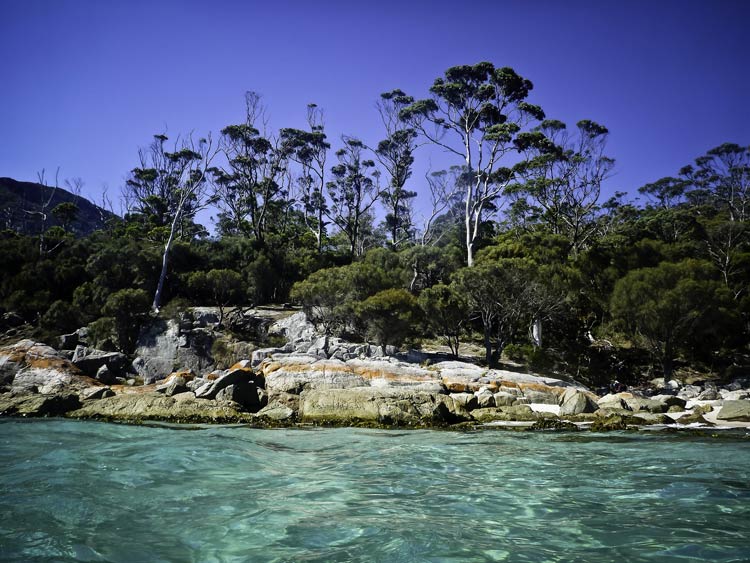
How To Reach To Freycinet National Park?
Freycinet National Park is located on the east coast of Tasmania, approximately 2.5 hours’ drive from Hobart. The park can be reached by car, bus, or plane, with the following being the most common options:
- By Car
If you have your own vehicle, you can reach Freycinet National Park by driving along the A3 Highway from Hobart. The park is well-signposted, and there is plenty of parking available at the park’s various attractions and camping grounds. - By Bus
There are several bus companies that offer regular services to Freycinet National Park from Hobart and Launceston. This is a convenient and affordable way to reach the park, and the bus companies offer a range of different tour packages that include stops at the park’s most popular attractions. - By Plane
If you prefer to fly, the nearest airport to Freycinet National Park is Hobart International Airport, which is approximately 2 hours’ drive from the park. From Hobart, you can rent a car or take a bus to reach the park.
No matter how you choose to reach Freycinet National Park, you are sure to be rewarded with breathtaking scenery and rich cultural heritage. Just be sure to plan your journey ahead of time, and always check local conditions and road closures before embarking on any activities.

Best Time To Visit Freycinet National Park
The best time to visit Freycinet National Park depends on your individual preferences and interests. However, here are a few things to consider:
- Summer (December to February)
Summer is the peak tourist season in Freycinet National Park, and the weather is warm and dry, making it a great time for outdoor activities such as hiking, swimming, and beach activities. - Spring (September to November)
Spring is a great time to visit Freycinet National Park as the weather is mild and the park is in full bloom, making it a great time for wildflower viewing and birdwatching. - Autumn (March to May)
Autumn is another great time to visit Freycinet National Park, with mild temperatures and fewer crowds. This is a great time for wildlife viewing, as many of the park’s animals are more active during the cooler months. - Winter (June to August)
Winter can be cold and damp in Freycinet National Park, with occasional rain and snow, but it can also be a beautiful time to visit. Winter is a quieter time in the park, and the cooler temperatures can make it a great time for more strenuous activities such as hiking and bushwalking.
No matter when you choose to visit Freycinet National Park, you are sure to be rewarded with breathtaking scenery, abundant wildlife, and a rich cultural heritage. Just be sure to come prepared for a range of weather conditions, and always check local conditions and road closures before embarking on any activities.
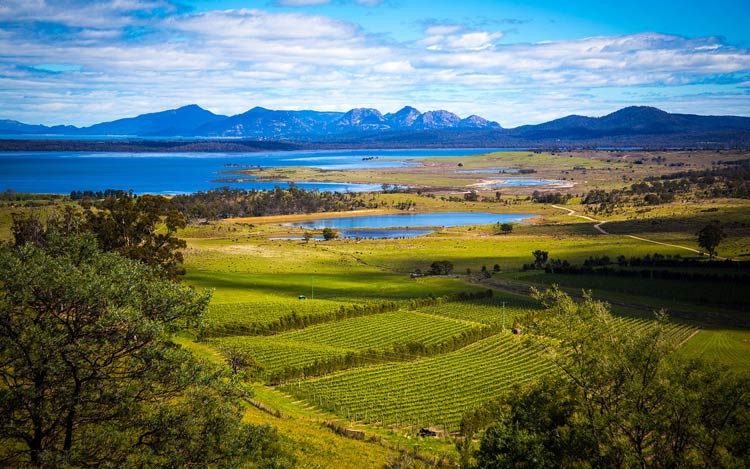
Conservation
Freycinet National Park is an important protected area, and conservation efforts have been in place for many years to ensure its preservation for future generations. Some of the measures that have been taken to conserve the park include:
- Controlled access
To minimize the impact of visitors, access to certain parts of the park is controlled and limited, with designated trails and campgrounds available for use. - Waste management
To reduce the amount of waste in the park, there are several waste management facilities in place, including recycling bins and composting toilets. - Erosion control
To prevent erosion and protect the park’s delicate ecosystem, measures have been taken to stabilize the trails and prevent overuse in sensitive areas. - Fire management
To prevent the spread of fire, a fire management plan is in place for Freycinet National Park, with regular monitoring and patrols taking place. - Threatened species protection
To protect the park’s threatened species, a number of programs have been implemented to monitor and conserve the populations of animals such as the Tasmanian Pademelon and the Tasmanian Tree Skink.
These are just a few examples of the measures that have been taken to conserve Freycinet National Park, one of Tasmania’s most precious and beautiful protected areas.
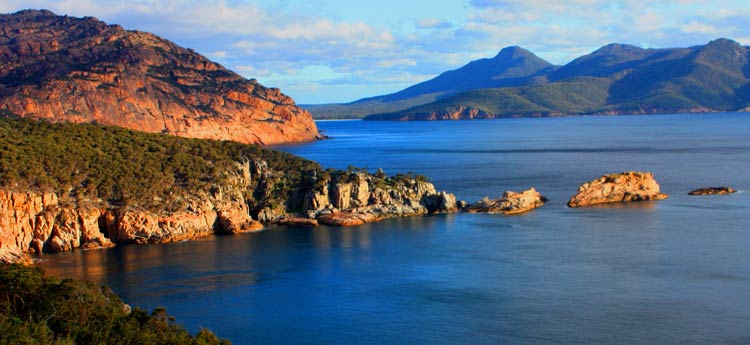
Freycinet National Park in numbers
- Area: The park covers an area of approximately 1,339 square kilometers (516 square miles).
- Elevation: The park’s highest point, Mount Graham, rises to a height of 1,158 meters (3,795 feet) above sea level.
- Visitors: The park receives approximately 250,000 visitors each year.
- Campgrounds: The park has several campgrounds, with a total of over 300 camping sites available.
- Hiking trails: There are several hiking trails within the park, including the popular Wineglass Bay walk and the Mount Graham hike, totaling over 40 kilometers (25 miles) in length.
- Beaches: The park has several stunning beaches, including Wineglass Bay, Friendly Beaches, and Hazards Beach, which are popular for swimming, sunbathing, and fishing.
- Marine life: The park’s waters are home to a diverse range of marine life, including dolphins, seals, whales, and over 100 species of fish.
These numbers give a sense of the size, popularity, and diversity of Freycinet National Park, which is an iconic and beloved protected area in Tasmania.
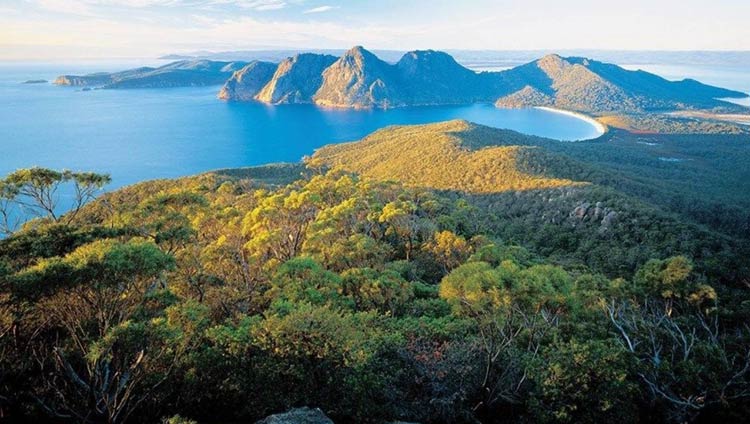
The cultural heritage of the Freycinet National Park
Freycinet National Park has a rich cultural heritage that is deeply connected to the Indigenous people of Tasmania, the Palawa, who have lived in the area for tens of thousands of years. The Palawa people have a deep spiritual connection to the land and sea, and their relationship with the environment has shaped the cultural heritage of Freycinet National Park in many ways.
The Aboriginal Tasmanians (Palawa people) have a long history of using the resources of Freycinet National Park for food, medicine, and other needs. They used the park’s beaches for fishing and hunting, and the surrounding forests for wood and shelter. They also had a complex spiritual relationship with the area, and many important cultural sites, such as rock shelters and middens, are still present in the park today.
Freycinet National Park has also played a significant role in the history of European settlement in Tasmania. In the 19th century, the park was used for timber harvesting and fishing, and a number of historic sites, such as the remains of whaling stations and fishing villages, are still visible in the park today.
Today, Freycinet National Park is recognized as an important cultural heritage site, and efforts are in place to protect and preserve its cultural significance for future generations. This includes ongoing work to document and protect Indigenous cultural sites, as well as the preservation of historic sites and buildings that are important to the broader cultural heritage of Tasmania.
Overall, Freycinet National Park is a rich tapestry of cultural heritage, reflecting the deep connections of the Indigenous Palawa people, the history of European settlement, and the ongoing efforts to preserve and protect this precious and unique protected area
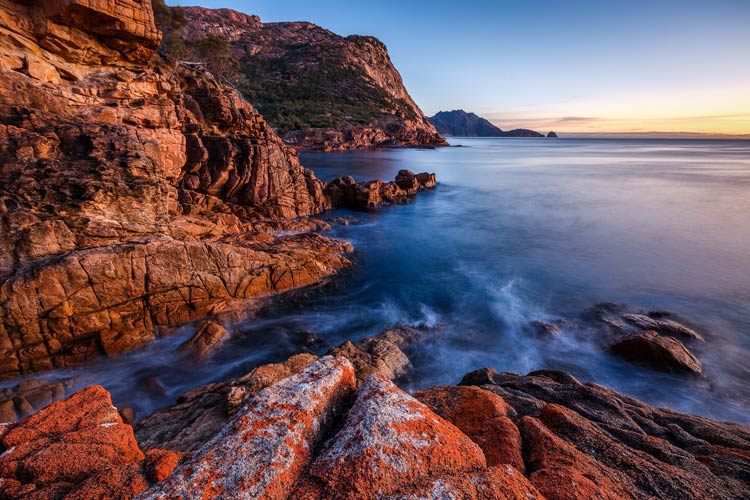
Interesting facts about Freycinet National Park
- Aboriginal history
Freycinet National Park has a rich indigenous history, with evidence of Aboriginal occupation dating back over 20,000 years. The area was an important meeting place for the local Aboriginal people, who used the land for hunting, fishing, and gathering. - Pink granite cliffs
The park is known for its stunning pink granite cliffs, which were formed over 500 million years ago and are some of the oldest rocks in Australia. - Unique flora
The park is home to a diverse range of flora, including over 500 species of plants, many of which are found nowhere else in the world. - Unusual wildlife
Freycinet National Park is home to some unusual and endemic wildlife species, including the Tasmanian Pademelon (Thylogale billardierii), a small wallaby that is found only in Tasmania, and the Tasmanian Tree Skink (Gongylomorphus spp.), a type of lizard that is unique to Tasmania and is known for its ability to climb trees. - Remote location
Despite its close proximity to the mainland, Freycinet National Park remains a remote and wild place, with limited road access and large areas of untouched wilderness. - Movie location
Freycinet National Park was the location for several scenes in the movie “The Kettering Incident”, a Tasmanian-based mystery-drama series that was released in 2016.
These are just a few of the many interesting facts about Freycinet National Park, a unique and beautiful protected area in Tasmania that continues to captivate visitors from around the world.
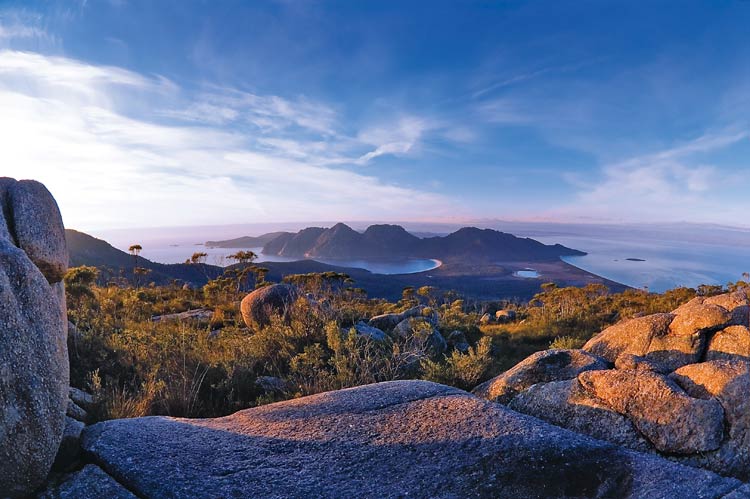
Q&A (questions and answers) about Freycinet National Park
Q: What is Freycinet National Park?
A: Freycinet National Park is a protected area located on the east coast of Tasmania, Australia. It encompasses over 110 square kilometers (42 square miles) of rugged coastal landscapes, including stunning pink granite cliffs, pristine beaches, and diverse wildlife.
Q: When was Freycinet National Park established?
A: Freycinet National Park was established in 1916, making it one of Tasmania’s oldest protected areas.
Q: What kind of landscapes can be found in Freycinet National Park?
A: Freycinet National Park is known for its stunning pink granite cliffs, pristine beaches, and diverse wildlife. The park also includes a range of habitats, including rocky shorelines, sandy beaches, wetlands, and forests, making it a unique and diverse protected area.
Q: What kind of wildlife can be found in Freycinet National Park?
A: Freycinet National Park is home to a wide range of wildlife, including wallabies, possums, Tasmanian devils, and numerous species of birds. The park is also home to some unusual and endemic species, such as the Tasmanian Pademelon and the Tasmanian Tree Skink.
Q: What are some popular activities for visitors to Freycinet National Park?
A: Freycinet National Park is a popular destination for outdoor activities, such as hiking, camping, fishing, and wildlife watching. The park is also known for its stunning beaches, including Wineglass Bay, which is considered one of the world’s top ten beaches.
Q: What kind of conservation efforts have been put in place to protect Freycinet National Park?
A: To protect Freycinet National Park, measures have been taken to control access, manage waste, prevent erosion, manage fire, and protect threatened species. These efforts are in place to ensure the preservation of this unique and precious protected area for future generations.
These are just a few of the questions and answers about Freycinet National Park, a stunning protected area in Tasmania that continues to captivate visitors from around the world.


